Cobras, Irulas & The Madras crocodile bank
Having lived in Chennai for the past 5 years , I badly wanted to visit the Madras crocodile bank for my love of snakes. It all started when I was a school going kid returning home at 4PM and would be waiting for my 5PM pokemon show at cartoon network. Someday I switched to Nat-Geo where this 60+ ear old Romulus Whitaker & his assistant named Ram was catching some Cobras in the paddy fields. I started watching the show regularly from then on for 4–5 years and later when I came to Chennai to do my UG, i got to know that Rom runs a crocodile bank on the ECR stretch and also has wide variety of snakes on display.

So for the past 4 years I would plead my college friends “Vaa machi crocodile park polaam” and they would be like “****, odi poidu”. Finally I visited this place last week and would like to share some interesting facts about the place and people who work there.
This place is split into two parts,
- Snake venom extraction area
- The rest of reptiles on display.
I’m going to exaggerate on the first one here and will touch up a little bit on the rest of reptiles. MCB has wide variety of reptiles that they have been collecting for the past 40years when this place was started.
MCB has one of the world’s largest crocodiles and the India’s largest named JAWS housed in a separate space isolated from all the other , even female :-( crocodiles for his ferocious behavior. In addition to the JAWS they also have a wide variety of salt water crocodiles , underwater gharial on display, a lot of turtles and tortoises.
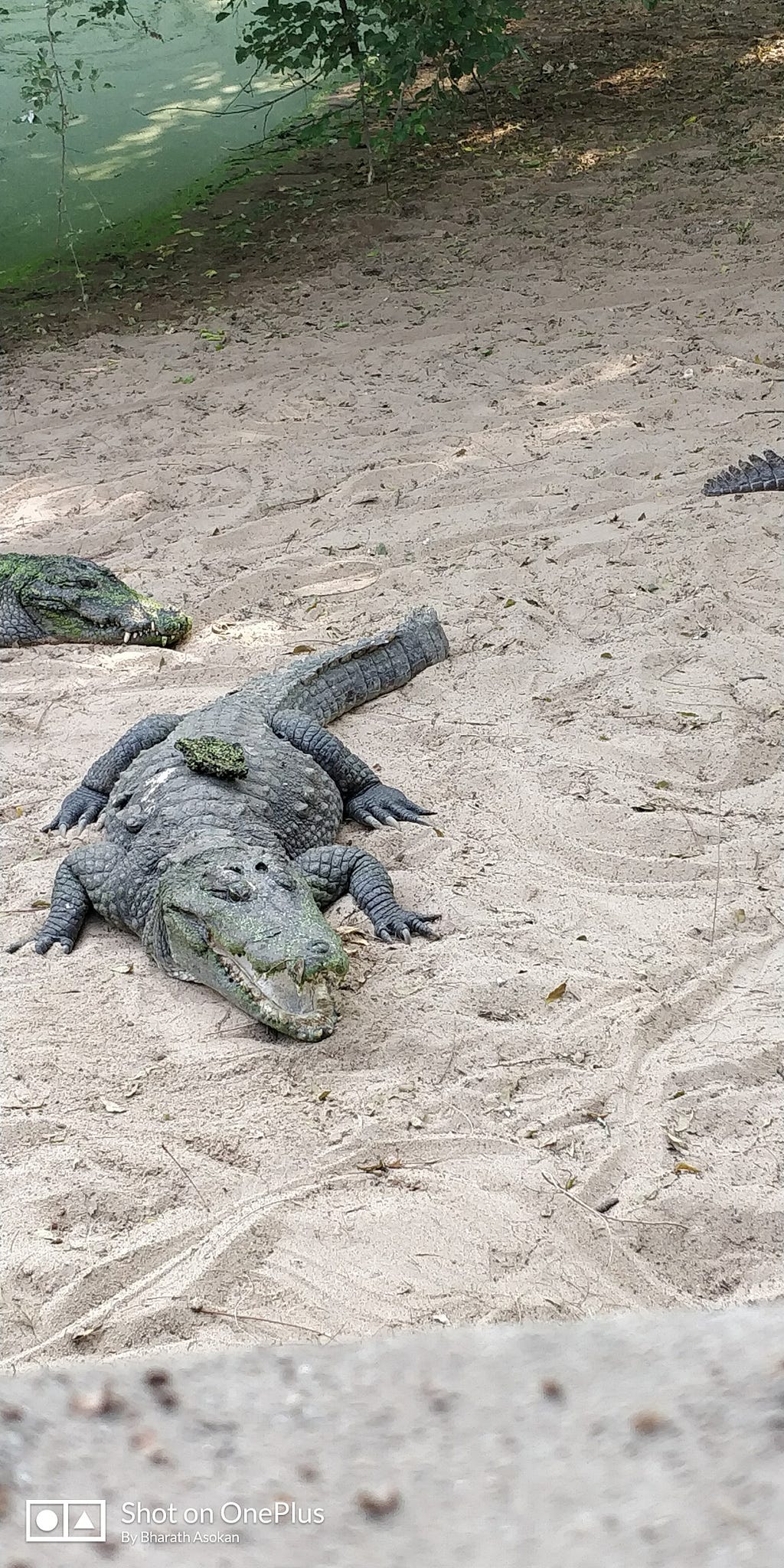
Monitor lizards and a Komodo dragon is their latest addition.
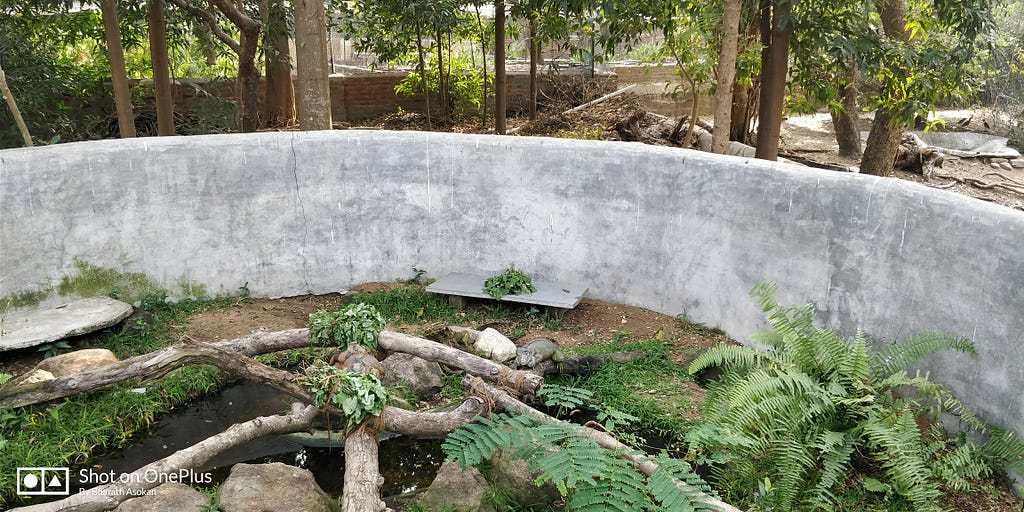
The snake venom extraction zone :
This is the main reason why I went to MCB in the first place. This place has a special ticket in-addition to the regular ticket. This zone is solely took care by the Irula tribe co-operative society. The reason why the Irula people do this traces back to 40–50 years back.
It was the time when export of snake skin flourished and in the early 1960’s and Irulas’ the native people of Nilgiris were the one who used to catch the snakes with their skills. Snake catching and exporting the skin was their only source of income at that point of time. But as the time went at one point the Government of India made a ban on such exports and snakes were rescued, but the daily wage of Irulas ???
This is when Rom and his team used their potential and gave them the same job of catching the snake but not skinning it , but use those snakes for anti-venom extraction. So this was like Win-Win situation for both the MCB and the Irula community. Later on they even setup a Co-operative society at the MCB to help the Irula people. Its those who demonstrate the process of venom extraction. More on that here.
There are about 130+ snakes in India, but only 40+snakes are venomous. In that only 4 of the snakes are commonly found in India which is termed as the BIG-4 of India. They are
- Cobra — நாக பாம்பு
- Saw scaled viper — சுருட்டை விரியன்
- Russel’s viper — கண்ணாடி விரியன்
- Krait — கட்டு விரியன்
I finally got to know that there is no snake called as சாரா பாம்பு, our people have blindly named the female cobra as one :-(
The venom extraction show is usually done when there is a good amount of crowd at MCB all through the day. Venom is extracted because,
The only way to cure a snakebite is to inject the antivenom. PERIOD.
No cutting of the bite with blades, no spiting out the blood, no tourniquet around the snake bite, as this will stop the blood flow and may even make that affected body part to be removed. The only first-aid is to sit back and relax and not getting tensed up as it may circulate the venom through the blood even more faster than normal flow.
Venom extraction :
Anti-venom is nothing but the serum that counteract against the venom injected by the snake. To the fact, when a snake has bit, our body produces antigens to counteract the effect of foreign substance entered our body. Its the matter when the venom exceeds a certain threshold our body fails to resist.
It is to be known that the first person to produce anti-venom injected the venom onto himself till his death in small doses. Once after certain amount of days, the antigen produced would be got out of human body and would be stored under cold temperatures and that’s what is called as anti-venom
But now-a-days the venom’s are injected into animals like horses and not humans. Every snake has its own anti-venom. A kraits’s AV cannot be used for a cobra bite. BTW, there are two kinds of snake venom,
- Hemotoxic — which circulate through blood and prevent the clotting of blood
- Neurotoxic — which affects the neural receptors .
The main ingredient for the anti-venom extraction is the VENOM, thats what MCB provides. So they get the venom from a snake once in a week and they mark it on the snake by making a small cut on the snake skin.
Tricking of snake to inject its venom is a nice one to watch, they actually coil a rubber around the mouth of a small beaker and make the snake to bite it on to the rubber, the snake thinking that as an enemy injects its venom onto the beaker. Then this venom is stored and sent out to produce the antivenom.
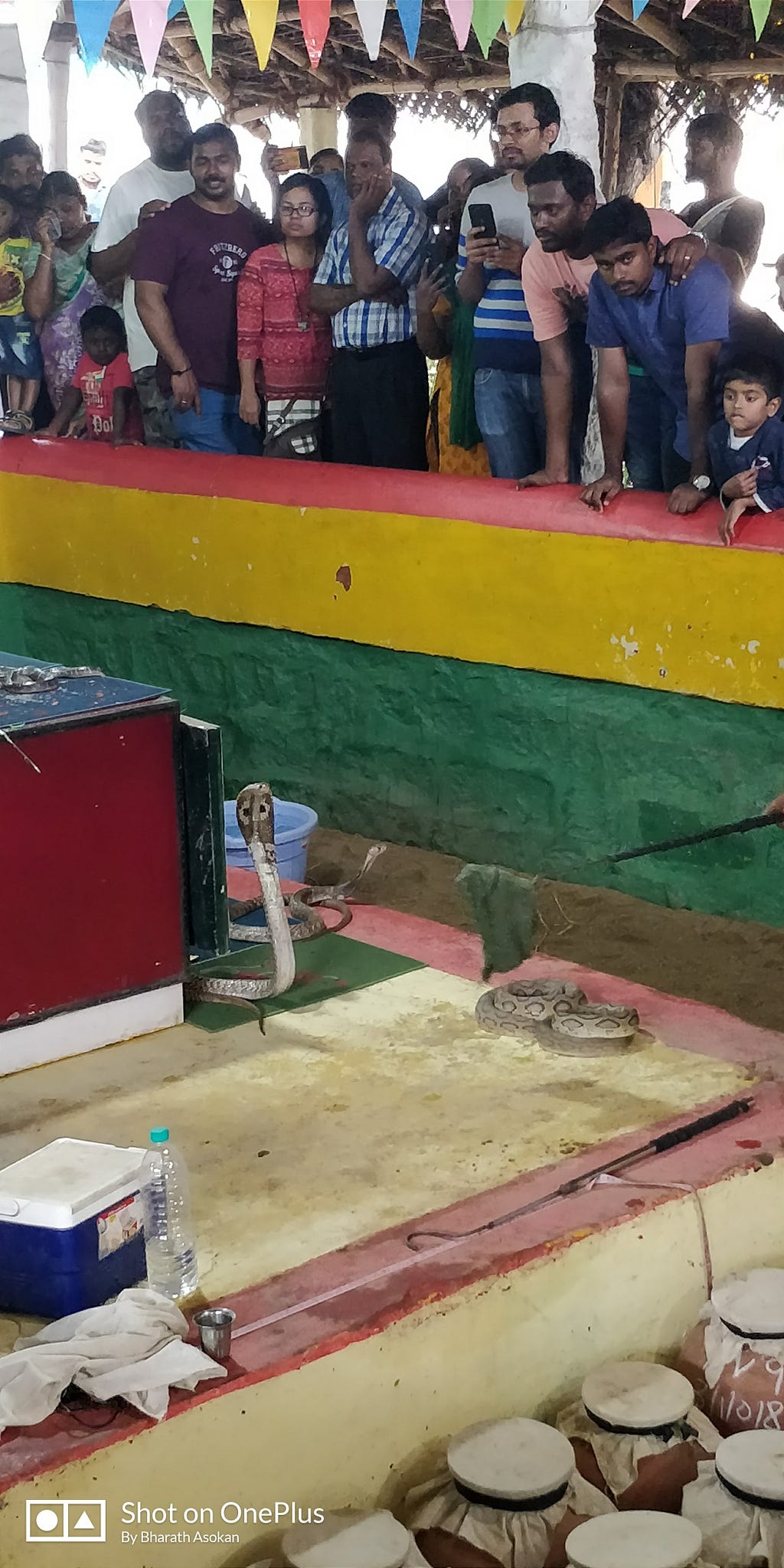
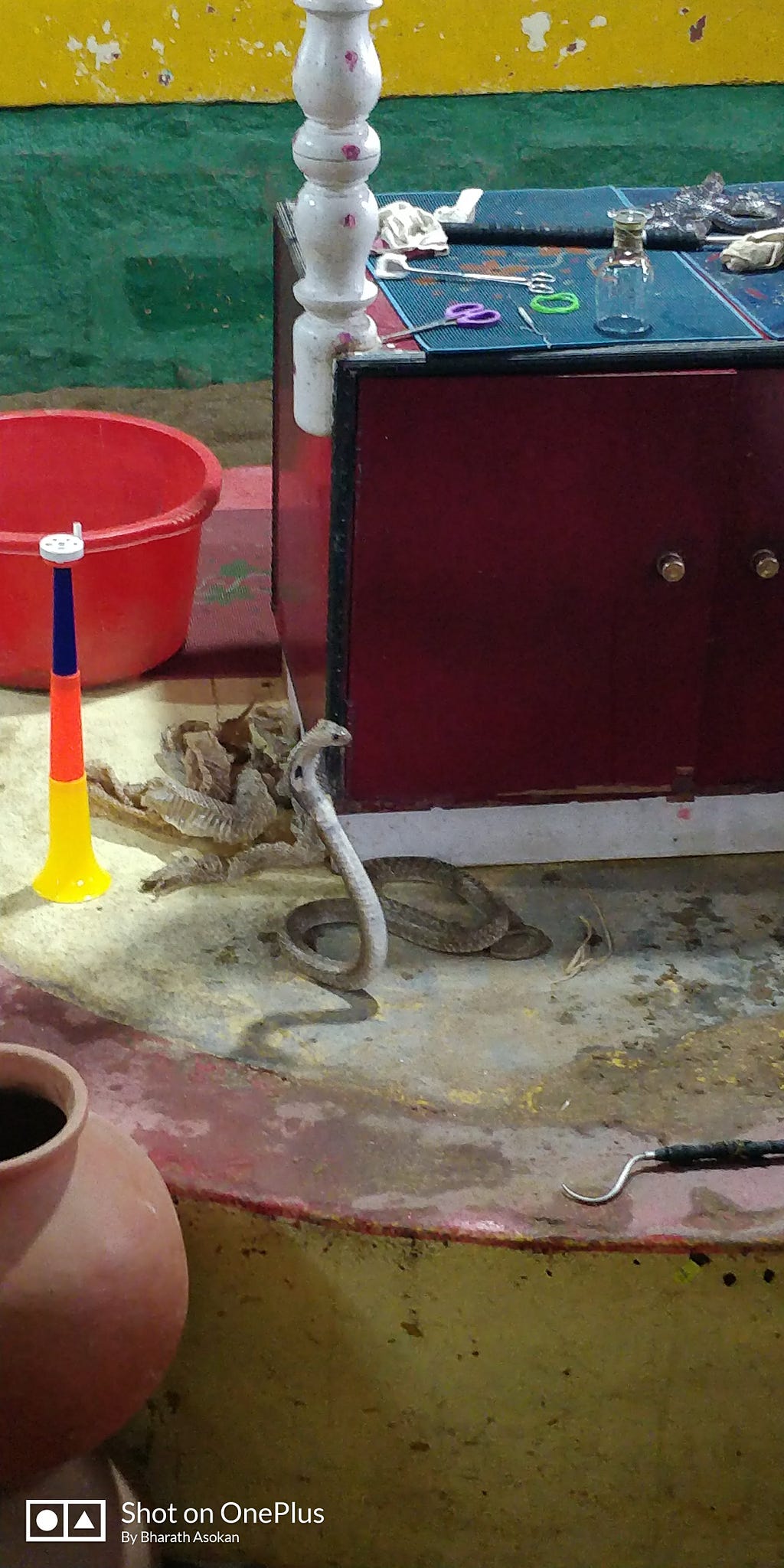
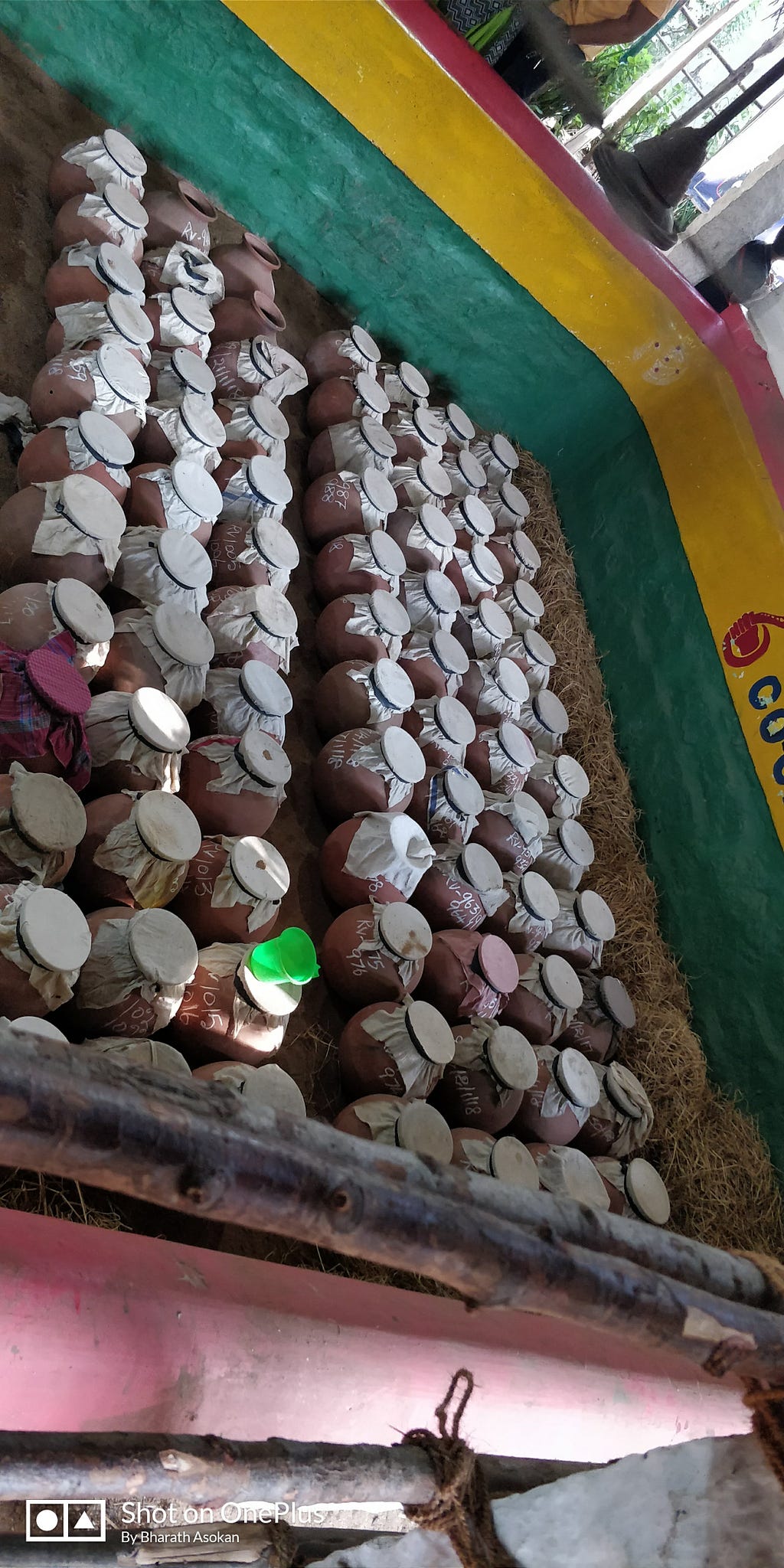
I didn’t get the chance to watch my childhood hero Romulus Whitaker as the day I went he went onto receive his Padma Bushan, I returned both happy and sad :-() . His better half Zai Whitaker who wrote my 1st lesson for my English subject in 10th std , writes about the indigenous people, animals and has also authored a book on Salim Ali — The bird man of India.
P.S : It was reliving the school excursions , with some snake for thought. FangON
Back to Top